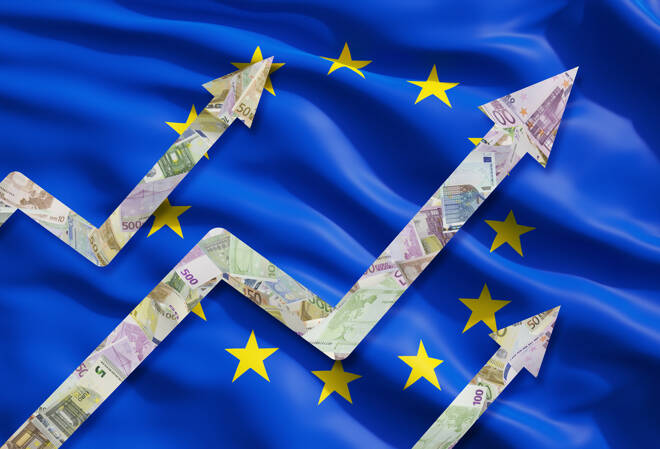Advertisement
Advertisement
European Equities: A Week in Review – 02/10/20
By:
It was a particularly busy week for the markets. Weekly gains across the European majors came in spite of increasing political uncertainty in the U.S.
The Majors
It was a relatively bullish week for the European majors in the week ending 2nd October.
The CAC40 and EuroStoxx600 rose by 2.01% and by 2.02% respectively, with the DAX30 gaining by 1.76%.
A busy week on the economic calendar, Brexit, and U.S politics were in focus throughout the week.
Away from the economic calendar, the 1st televised presidential debate weighed on the European majors mid-week.
At the end of the week, news of Trump testing positive for COVID-19 also pinned the majors back
Providing support to the majors in the week, however, was progress towards a COVID-19 relief Bill on Capitol Hill.
The Stats
It was a particularly busy week on the Eurozone economic calendar.
Key stats included prelim inflation figures, retail sales, unemployment, and manufacturing PMI numbers.
It was a mixed bag on the economic data front. Retail sales figures from France and Germany and German unemployment figures were EUR positive.
Manufacturing PMIs were also skewed to the positive, with Germany’s PMI hitting a 26-month high. For the Euro bloc, a further pickup in activity and new orders drove the PMIs upwards.
Prelim inflation figures for September reflected a pickup in deflationary pressures, however.
The Eurozone’s annual rate of core inflation softened from 0.4% to 0.2%. More significantly, however, consumer prices fell by 0.3%, year-on-year, following a 0.2% decline in August.
Month-on-month, consumer prices rose by 0.1%, partially reversing a 0.4% decline in August.
From the U.S
It was also a particularly busy week on the economic data front.
Key stats included September consumer confidence, ADP nonfarm, Manufacturing PMIs, weekly jobless claims, and labor market data.
Also in focus on Friday, were factory orders for August.
Finalized 4th GDP and consumer sentiment figures, August inflation, trade, and personal spending data had a muted impact in the week.
The stats were skewed to the positive. Consumer confidence and ADP numbers impressed, with the weekly jobless claims seeing a decline in late September.
With personal spending on the rise, marginally softer growth in the manufacturing sector was the only negative ahead of Friday’s stats. The ISM Manufacturing PMI slipped from 56.0 to 55.4. While the headline figure was negative, the employment sub-index jumped from 46.4 to 49.6.
At the end of the week, the U.S labor market and factory order figures failed to support riskier assets.
Non-farm payrolls rose by 661K, following a 1,489k surge in August. This was well short of an expected 850k rise. The unemployment rate fell from 8.4% to 7.9%.
Wage growth and the participation rate also suggested that the labor market recovery was spluttering.
Factory orders also failed to impress at the end of the week. A 0.7% rise in August came up short of a forecasted 1% increase. In July, orders had jumped by 6.5%.
The Market Movers
From the DAX, it was a mixed week for the auto sector. Continental rallied by 7.48% to lead the way, with BMW and Daimler gaining 3.92% and 5.32% respectively. Volkswagen bucked the trend in the week, with a 1.87% loss.
It was a bullish week for the banking sector that rebounded from the previous week’s scandal-driven losses. Commerzbank and Deutsche Bank rallied by 7.50% and by 6.13% respectively.
From the CAC, it was a moderately bullish week for the banks. Credit Agricole and Soc Gen saw gains 1.26% and by 1.28% respectively, with BNP Paribas rising by 0.79%.
The gains in the week failed to make a dent into the heavy losses from the week prior, however.
The French auto sector also struggled in the week. While Peugeot rose by 0.13%, Renault ended the week down by 1.76%.
Air France-KLM followed last week’s 19.1% slump with a 2.97% loss, while Airbus rallied by 7.66%. In the previous week, Airbus had fallen by 12.51%.
On the VIX Index
It was a 2nd consecutive week in the green for the VIX. In the week ending 2nd October, the VIX rose by 4.74%. Following a 2.13% gain from the previous week, the VIX ended the week at 27.63.
The weekly gain came in spite of the U.S majors managing to reverse losses from the week prior. For the S&P500, a 1.52% gain brought to an end a run of 4 consecutive weeks in the red.
For the week ending 2nd October, the S&P500 and the Dow ended the week up by 1.87% and by 1.52% respectively. The NASDAQ wasn’t far behind, with a 1.48% gain.
The Week Ahead
It’s a busy week ahead on the Eurozone economic calendar.
Key stats include September service PMIs for Italy and Spain and finalized PMIs for France, Germany, and the Eurozone.
The focus will then shift to Germany. Economic data includes factory orders, industrial production, and trade data for August.
August figures will need to be on the rise to support the survey-based PMI numbers seen from the manufacturing sector.
From the U.S, the all-important ISM Non-Manufacturing PMI and the weekly jobless claims will also influence.
Away from the economic calendar, Brexit, COVID-19, and U.S politics will also be in focus in the week.
About the Author
Bob Masonauthor
With over 28 years of experience in the financial industry, Bob has worked with various global rating agencies and multinational banks. Currently he is covering currencies, commodities, alternative asset classes and global equities, focusing mostly on European and Asian markets.
Advertisement
